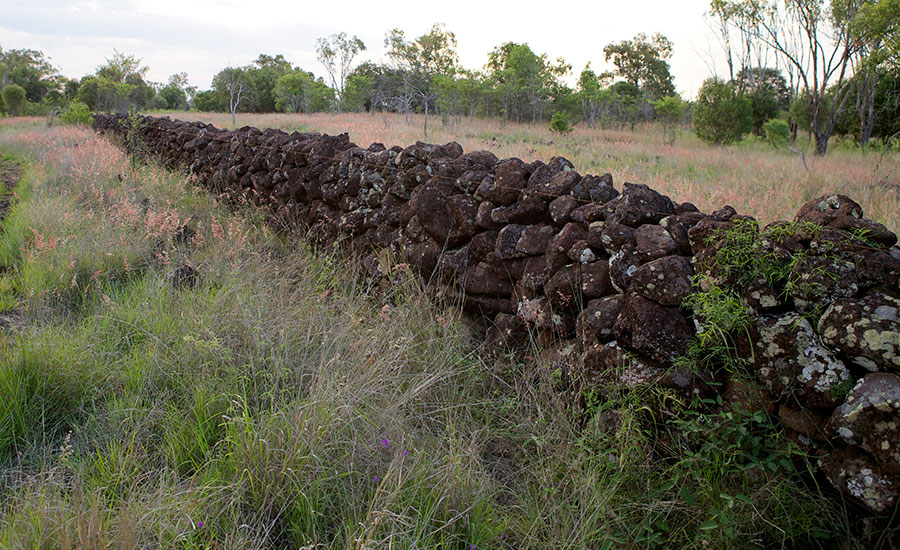Imade Credit: Wikipedia
The beauty of Jimbour’s main residence may be the first thing you’re stunned by but what if we told you there was something heritage listed tucked away and nestled in grassland that was extremely rare and of great significance?
Introducing Jimbour’s Great Stone Wall. An important and rare piece of history that was added to the Queensland Heritage register in 2005, The Great Wall extends for about 6.5 kms and is approximately 1.5m high. Despite it’s age, some sections of the wall are in great condition having been preserved for 130 years. Jimbour’s Great Stone Wall symbolises the cultural heritage of Queensland, and shines a light on the pastoral history of the jewel of the Darling Downs, Jimbour.
The stone wall was constructed around the same time as the Jimbour house in 1874 when Jimbour was known as ‘Jimbour Station’ and was one of Queensland’s largest pastoral enterprises. Made from two parallel lines of stone the middle of the Great Stone Wall is filled with rumble and smaller stones making it a rather tedious process requiring skill and patience. The practice originated in England in the 18th and 19th century and is usually erected to signify property or keep animals out or in a certain area. It seems that for the sake of Jimbour the wall was used in an effort to control wallabies and in 1882 the Land Commissioner for the Darling Downs reported that portions of Jimbour were ‘rendered almost useless by reason of being overrun with wallaby’.
As a piece of cultural heritage, ‘The Great Wall’ signifies the cultural heritage that influenced Queensland history and provides evidence of traditional European technology used by early settlers.
Today you can visit ‘The Great Wall’ of Jimbour and marvel at the technique that has diminished over time. Book your trip to Jimbour now.
References
Queensland Government. (2005). Available at: https://apps.des.qld.gov.au/heritage-register/detail/?id=602415
David, M. (2006). The Great Wall of Jimbour: Heritage and the Cultural Landscape. Public History Review. Vol. 12.



